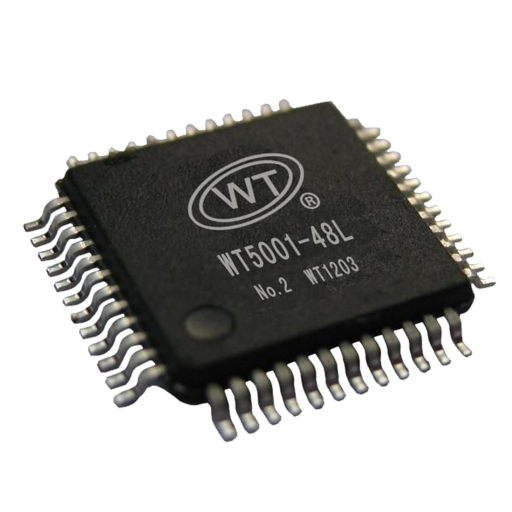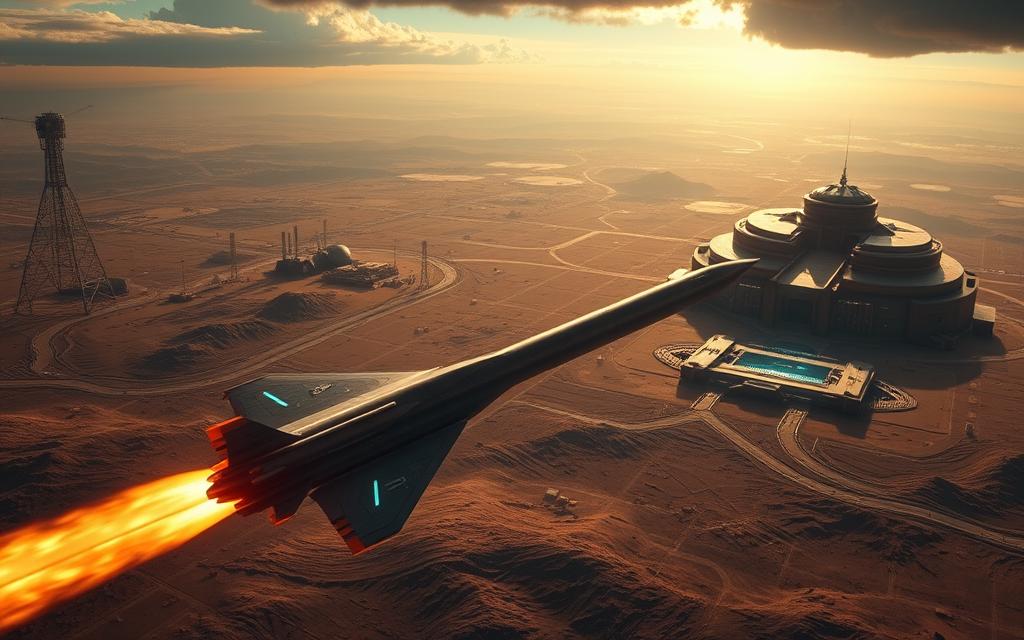Hypersonic systems are a big step forward in aerospace engineering. They go faster than Mach 5, which is five times the speed of sound. This makes them very fast and able to move quickly.
They are different from old weapons because they use new ways to move. This helps them stay stable even when they are going very fast.
Many countries are spending a lot of money on hypersonic technology. They think it’s very important for defence. The market for hypersonic weapons is expected to grow to $12.18 billion by 2030.
This shows how important hypersonic technology is. Countries are working hard to make good use of it. They see it as a way to change how they defend themselves.
Hypersonic vehicles behave differently when they fly fast. They create hot clouds that make them hard to spot. This makes it tough for old defence systems to catch them.
These vehicles are very fast and can hit targets far away quickly. This is very useful for the military. As scientists learn more, hypersonic technology will change how wars are fought.
Defining Hypersonic Technology
When objects go faster than five times the speed of sound, they enter a new world. This world is where normal physics doesn’t apply. Hypersonic technology is all about extreme speed and new engineering ideas.
Breaking the Sound Barrier: Mach 5+ Explained
To understand hypersonic speeds, let’s look at some examples:
| Speed Category | Mach Range | Example |
|---|---|---|
| Subsonic | Mach 0-0.8 | Commercial airliners |
| Supersonic | Mach 1-5 | Concorde jet |
| Hypersonic | Mach 5+ | DF-ZF glide vehicle |
Comparison with Subsonic and Supersonic Speeds
At Mach 5, air friction makes temperatures over 2,000°C. This is different from supersonic flight because it poses unique challenges:
- Materials can degrade from extreme heat
- Plasma can disrupt communications
- New control systems are needed for complex airflow
Real-World Applications Beyond Military Use
Civilian innovations are as exciting as military projects. For example, Reaction Engines’ SABRE engine aims to power spaceplanes at Mach 5.5. Other projects include:
- Fast transcontinental flights (London-Sydney in 4 hours)
- Low-cost satellite deployment systems
- Emergency medical supply delivery networks
“The 2023 US Congressional Budget Office report classifies hypersonic systems into two distinct categories: boost-glide vehicles and airbreathing cruise missiles – a critical distinction shaping global arms control discussions.”
Two Primary Systems in Development
Modern hypersonic technology has two main approaches:
Hypersonic Glide Vehicles (HGVs)
China’s DF-ZF shows how HGVs work – launched by rockets, then gliding at Mach 10. They are different from ballistic missiles because:
- They can change direction unpredictably
- They fly lower, making them quicker
- They could be reusable for space missions
Hypersonic Cruise Missiles
These use scramjet technology, as seen in the X-51A Waverider’s 210-second flight at Mach 6. Their benefits include:
- They use atmospheric oxygen, not stored oxidiser
- They can change direction mid-flight
- They are smaller than HGVs
The Science Behind Hypersonic Speed
At speeds over Mach 5, vehicles face extreme heat and air friction. This is like the heat of spacecraft re-entry. Engineers must solve complex problems to make hypersonic travel possible.
Aerothermal Challenges at Mach 5+
Speeds over five times the sound of light cause air to compress violently. This creates temperatures over 2,000°C. Such heat can melt the metals used in most aircraft.
Plasma Formation and Radio Blackout
A plasma sheath forms around hypersonic vehicles, blocking radio signals. In the 1960s, this caused 30-second blackouts during X-15 flights. Today, plasma mitigation strategies include:
- Magnetic field manipulation to disrupt ionisation
- Frequency-hopping radar systems
- Strategic vehicle shaping to reduce plasma density
Material Science Breakthroughs
Russia’s Avangard vehicle uses carbon-carbon composites to withstand 3,500°C. British researchers have developed ceramic meta-materials. These materials cool critical components through micro-channel heat exchangers.

Propulsion Systems Breakthroughs
Traditional jet engines fail at hypersonic speeds. Two new approaches are being used to maintain thrust beyond Mach 5.
Scramjet Engine Technology
DARPA’s HAWC prototype uses air-breathing scramjets. These engines combust fuel in supersonic airflow. They don’t need oxidisers, improving fuel efficiency by 40-60%.
Boost-Glide Trajectory Mechanics
The US Conventional Prompt Strike system launches glide vehicles into suborbital arcs. These vehicles ‘skip’ off the atmosphere, achieving ranges over 5,000 km. They avoid predictable paths.
Recent tests showed boost-glide vehicles can dodge at 25G forces. This is like a fighter pilot feeling 25 times their body weight during turns.
Hypersonic Defence Challenges
Defending against hypersonic weapons is a huge challenge. Russia’s 2023 missile strikes on Kyiv showed this clearly. Hypersonic detection systems find it hard to track fast-moving targets at Mach 8+ speeds.
Modern defence systems face two big challenges. They need to close surveillance gaps and develop fast interception methods. This must happen in seconds.
Detection Limitations in Current Systems
Old radar networks were made for predictable missiles, not the fast, changing paths of hypersonic glide vehicles. This leads to three main problems:
Radar coverage gaps
Systems like the US Navy’s Aegis combat system have limits due to the Earth’s shape. They can only detect targets up to 1,200 km away. A Mach 5 hypersonic weapon can cover this distance in under 12 minutes, leaving little time for response.
Satellite tracking complexities
Space-based sensors have wider coverage but face challenges:
- Atmospheric distortion during re-entry phases
- Limited revisit rates over polar regions
- Signal interference from plasma sheaths surrounding hypersonic vehicles
“The combination of low radar cross-sections and high manoeuvrability makes hypersonic threats 73% harder to track than ICBMs.”
Interception Technologies in Development
Researchers are working on new solutions. DARPA’s OpFires and the UK’s Dragonfire laser prototype are promising. Two methods stand out:
Directed energy weapons
Lockheed Martin’s 300kW laser systems can disable sensors and control surfaces quickly. But, they need 20-30 seconds of contact, which is a problem against fast targets.
Hypervelocity projectile systems
Raytheon’s Mako gliding interceptor reaches Mach 6 speeds. It uses hybrid rocket-ramjet propulsion. With advancements in defence networks, it could tackle threats in both boost and terminal phases.
| Technology | Response Time | Effective Range | Current Status |
|---|---|---|---|
| Space-based IR Sensors | Continuous | Global | Testing Phase |
| High-Power Microwaves | 0.3 seconds | 10 km | Prototype |
| Hypersonic Interceptors | 90 seconds | 500 km | Deployment 2026 |
NATO is upgrading its £2.1 billion satellite constellation. It aims to reduce tracking latency to under 8 seconds by 2027. But, experts say even perfect detection won’t help without advanced layered defence networks for coordinated attacks.
Global Hypersonic Arms Race

Nations around the world are speeding up their work on hypersonic weapons. This is changing how they defend themselves and the balance of power globally. The race is about who can make the fastest and most advanced weapons, going beyond Mach 5.
United States’ Conventional Prompt Strike Programme
America’s defence companies are leading with two new prototypes:
Lockheed Martin’s AGM-183A ARRW
The Air-Launched Rapid Response Weapon had a tough start in 2024. It failed in its March test at Vandenberg Space Force Base. But, its 11,000 km/h speed is key to the Pentagon’s quick-strike plans.
Raytheon’s HAWC prototype
This scramjet-powered vehicle flew successfully for the seventh time in May 2024. It hit Mach 5.2 using special fuel. It also has a system to avoid collisions by mapping the terrain.
Russian and Chinese Advancements
Eurasian rivals have already put their systems into action, ignoring hypersonic arms control rules:
Avangard HGV system
Russia’s Avangard glider can go as fast as Mach 27. It has a two-stage boost system. Satellite images show 12 units at Yasnensky missile base.
DF-ZF hypersonic glide vehicle
China’s DF-17 missiles now carry the DF-ZF vehicle. It has stealth technology. The PLA has shown it can hit targets at 2,500 km ranges.
European Consortium Efforts
European groups are working together to keep up with the big powers through multilateral development programmes:
UK’s Reaction Engines SABRE programme
The Synergetic Air-Breathing Rocket Engine finished phase three in 2024. It can switch between air-breathing and rocket modes. Its pre-cooler technology handles very hot air at Mach 5.
EU’s HERACLES project
This project brings together six nations to work on thermal protection systems. The VMaX-2 tests reached Mach 6.3. This was made possible by ceramic matrix composites.
“The hypersonic proliferation index shows a 300% increase in test launches from 2020, with non-state actors getting these technologies through other countries.”
India and North Korea are also making progress, making it harder to stop the spread of these weapons. As defence alliances update their agreements, the outcome of this race will shape the 21st century.
Navigating the Hypersonic Era’s Strategic Landscape
Hypersonic technology is changing modern warfare, bringing new strike powers but also risks. The 2024 Congressional Budget Office found that the costs of making these technologies often outweigh their benefits. This calls for careful planning in using dual-use technologies.
These technologies could change how we launch into space, as seen with SpaceX’s Starship. They also keep their military uses.
NATO made big moves in July 2024 to control hypersonic weapons. But, Russia and China are moving fast with their own hypersonic projects. The US is working on its Conventional Prompt Strike programme to keep up.
But, there are big challenges in making these systems work well. Defence companies like Lockheed Martin and Raytheon Technologies think the market will be worth £32 billion by 2030. Yet, making these systems work is hard because of material science problems.
European groups are working on scramjet prototypes. The future of hypersonics depends on finding the right balance between defence and the risk of escalation. We need open testing and talks between countries to move forward safely and use space technology for good.







